
In Conversation : Tirru IR Cinematography!
Dec 01 2024
Tirru: A Master of Visual Storytelling
Starting his journey as an assistant cameraman under the legendary P.C. Sreeram, Tirru has evolved into one of the most innovative and celebrated cinematographers in Indian cinema. His collaborations with cinematic stalwart Kamal Haasan introduced pioneering techniques that pushed the boundaries of visual storytelling. Tirru’s remarkable work on 24 (2016) earned him the National Film Award for Best Cinematography, cementing his legacy as a visionary artist. Known for his experimental approach and technical brilliance, Tirru continues to redefine the art of cinematography, blending creativity with cutting-edge technology.
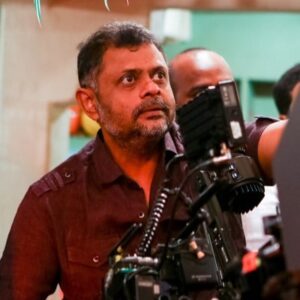
Cinematographer Tirru shares his experience on Infrared Cinematography he had experimented for a song sequence upcoming feature film Game Changer
When did your journey with infrared cinematography begin, and what inspired it?
My fascination with infrared cinematography started around 2010 during Enthiran. I was supposed to handle the cinematography and wanted to create a song with an “otherworldly” visual experience. Infrared (IR) immediately came to mind. I began experimenting with Kodak IR still negative film and even set up my own developing system, which worked successfully. I then contacted Kodak to provide IR motion picture negative film. To my surprise, they agreed and supplied me with 1000 feet of footage. However, due to unavoidable circumstances, I had to step away from the project, and the IR concept couldn’t be realized at that time.
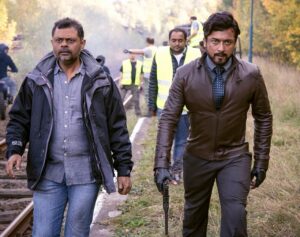
Did you pursue infrared cinematography in any of your subsequent projects?
Yes, I revisited this idea during the film 24. By this time, I wanted to use a digital medium. I purchased two Sony R7 cameras from the USA—one modified for full-spectrum photography and the other with the IR filter removed. Unfortunately, while transporting the cameras to Poland for a shoot, customs detained the “IR Removed” camera, labeling it as equipment restricted for defense use. Despite my research and preparation, I lost another opportunity to explore IR cinematography.
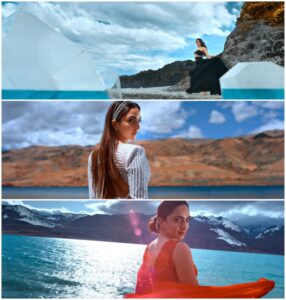
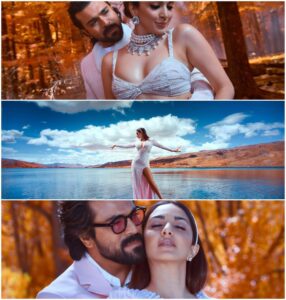
What made you decide to use infrared cinematography in Game Changer?
For Game Changer, there’s a beautiful melody in the film that needed exquisite and unique visuals. I immediately thought of infrared cinematography to achieve this. Director Shankar was equally excited about the idea. However, I didn’t want to use the complete IR spectrum. Instead, I chose to work with varied intensities using IR-pass filters ranging from 590nm to 860nm. This allowed us to maintain a pleasing aesthetic while still creating a surreal, dreamlike quality.
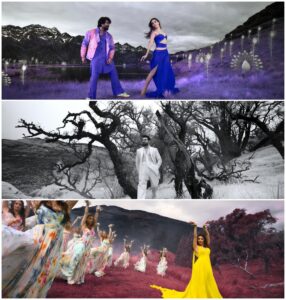
Could you elaborate on the process of preparing the camera for infrared cinematography?
Finding the right camera was a significant challenge. After testing several options, I focused on the Arri Alexa LF. However, the camera’s IR cut filter needed to be removed to capture infrared light. This modification was abled by Tahir from Hyderabad, who had earlier version of Alexa LF who sent the camera to Cineom for the sensor modification.
Once the IR cut filter was removed, we faced a new issue—the change in flange distance due to the missing layer. This affected the focus calibration. To resolve it, I sourced a clear glass layer from China with the same refractive value as the removed IR cut filter. This glass layer restored the flange distance, allowing lenses to focus correctly.
What other technical considerations were involved?
Infrared cinematography requires meticulous attention to various factors:
1. Filters: I used filters with wavelengths from 590nm to 860nm to achieve varied effects.
2. Lighting: Bright sunlight is ideal, as IR reflectance is highest under natural light. In New Zealand, where we started filming, the weather was overcast, so I switched to a full-spectrum Alexa LF for initial shots. Later, we completed the shoot in Pune and Mahabaleshwar under bright sunlight, which gave fantastic IR effects.
3. Costumes: Only certain colors, particularly in the red and blue channels, reflect well in the IR spectrum. Fabrics and textures were chosen carefully to complement the IR aesthetic.
How does foliage play a role in infrared cinematography?
Foliage reflects the highest amount of infrared light due to chlorophyll. This unique property allows trees, grass, and plants to appear dramatically white or glowing in infrared footage. In the song for Game Changer, I used this characteristic to create a surreal, dreamlike environment. By carefully selecting shooting locations and lighting conditions, I was able to alter the look of the foliage to fit the song’s mood.
What were the biggest challenges during the shoot?
There were many challenges. The initial shoot in New Zealand was hampered by muted light and inclement weather, making it difficult to capture the full IR spectrum. After returning to India, we faced the challenge of adapting to the brighter conditions in Pune and Mahabaleshwar. Another significant hurdle was the technical complexity of camera modifications and ensuring the focus was perfect after altering the flange distance. Additionally, costume selection was tricky since only specific fabrics and colors render well in IR.
What is the process of infrared cinematography?
The process involves several steps:
1. Camera Preparation: Remove the IR cut filter from the sensor. This may involve modifying the camera with the help of technicians.
2. Filter Selection: Use IR-pass filters to control the wavelength of light captured (e.g., 590nm, 720nm, 860nm).
3. Lighting: Opt for bright natural light or use specialized IR lighting indoors.
4. Lens Selection: Use lenses tested for IR compatibility to avoid issues like hotspotting.
5. Focus Calibration: Adjust the flange distance or use a replacement glass layer to ensure accurate focus.
6. Costume and Set Design: Choose colors and materials that work well in the IR spectrum.
7. Shooting: Experiment with framing, light angles, and IR intensity to achieve the desired effect.
8. Post-Production: Grade the footage carefully to balance surrealism with a pleasing visual aesthetic.
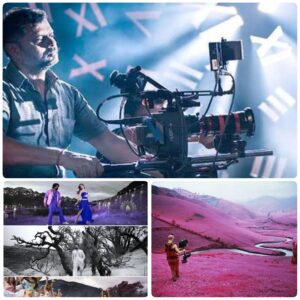
How do you see the future of infrared cinematography?
Infrared cinematography is a fascinating medium that offers endless creative possibilities. I plan to explore it further for narrative storytelling and experiment with black-and-white IR for unique tonal expressions. It’s a challenging but rewarding technique that can elevate a film’s visual language to another level.
Any advice for aspiring cinematographers interested in IR cinematography?
Infrared cinematography demands extensive research, preparation, and experimentation. Be prepared for challenges with camera modifications, customs regulations, and environmental conditions. Test every element—filters, lighting, and costumes—before committing to a shoot. Most importantly, keep pushing boundaries and don’t be afraid to innovate.
Article drafted by
CJ Rajkumar
Author/ Cinematographer
